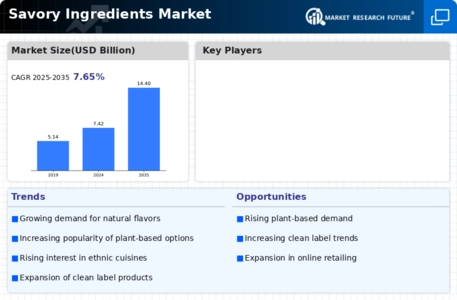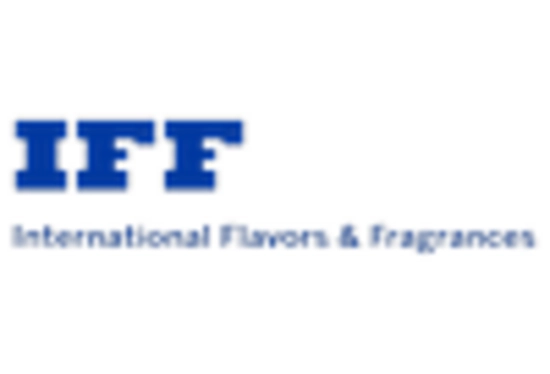Market Trends
Key Emerging Trends in the Savory Ingredients Market
The savory ingredients market is experiencing notable trends shaped by changing consumer tastes, dietary preferences, and global culinary influences. One significant trend revolves around the increasing demand for plant-based savory ingredients. As more consumers adopt vegetarian and flexitarian diets, there is a growing emphasis on plant-derived proteins and flavor enhancers. This trend aligns with the broader movement toward sustainability and ethical eating, prompting the food industry to explore and innovate with savory plant-based options.
A key driver in the savory ingredients market is the surge in global flavor exploration. Consumers are becoming more adventurous in their culinary preferences, seeking diverse and authentic flavors from around the world. This has led to an increased demand for exotic herbs, spices, and sauces, contributing to the globalization of cuisines. As a result, the savory ingredients market is witnessing a rise in the popularity of international flavors, such as Middle Eastern, Asian, and Latin American influences, creating a more diverse and dynamic culinary landscape.
Clean label and natural ingredients are gaining prominence in the savory ingredients market, reflecting a broader consumer preference for healthier and more transparent food options. Manufacturers are responding by reformulating products to eliminate artificial additives, preservatives, and excessive sodium. This clean label trend extends to the entire supply chain, with an emphasis on responsibly sourced and minimally processed savory ingredients to meet the demand for cleaner and more natural food choices.
Sustainability is a growing consideration in the savory ingredients market, with consumers increasingly concerned about the environmental impact of food production. This has led to a focus on sustainable sourcing practices, ethical farming, and eco-friendly packaging within the savory ingredients industry. Brands are recognizing the importance of incorporating sustainable practices into their operations to appeal to environmentally conscious consumers, contributing to a more sustainable and responsible food supply chain.
The rise of snacking culture is influencing the savory ingredients market, with consumers seeking convenient and flavorful options for on-the-go consumption. This has led to an increased demand for savory snacks, such as chips, crackers, and savory protein bars. The market is responding with innovative savory ingredients and flavor profiles to cater to the evolving preferences of snack-hungry consumers. The trend towards snacking is also impacting traditional meal formats, with savory flavors playing a crucial role in the development of snack-sized, portable, and shareable products.
The COVID-19 pandemic has accelerated certain trends in the savory ingredients market. With increased home cooking and a focus on pantry staples, consumers turned to savory ingredients to enhance the flavors of homemade meals. This trend also influenced the rise of online grocery shopping, prompting companies to strengthen their digital presence and optimize supply chains to meet the heightened demand for savory ingredients through e-commerce platforms.
Geographically, the savory ingredients market is witnessing growth across various regions, with a particular emphasis on emerging markets. As urbanization and disposable incomes rise in developing countries, there is a growing demand for diverse and flavorful savory ingredients. This trend is particularly evident in Asia-Pacific, Latin America, and the Middle East, where a fusion of global and regional flavors is shaping the local culinary landscape.

















Leave a Comment